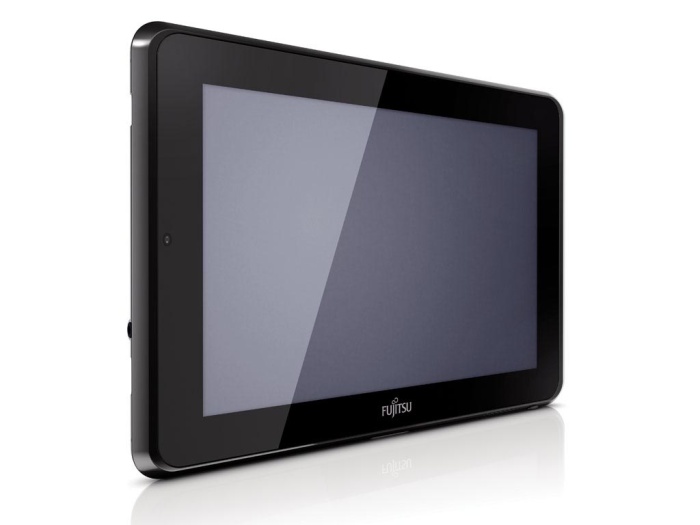Fujitsu Stylistic Q550 Tablet: Impressive, but sluggish
By Fathi Ridzuan September 14, 2012
 MyDigitalLife
MyDigitalLife
With Fathi Ridzuan
THE tablet market was dominated initially by the iPad until the emergence of Android-based devices. Whilst both systems provide plenty of mobility options, none can be seriously considered for business use as neither can be used with Microsoft Office, which is the official bearer of business software.
Whilst you can view documents created by Microsoft Office by using third-party software like Polaris Office for Android, you cannot actually use Microsoft Office on either system. So if you are a serious business user, and you need the mobility options of a tablet, you don’t have much choice other than the few Windows-based tablets available in the market, like the Fujitsu Stylistic Q550 Tablet below, which runs on Windows 7.
Unfortunately, Windows 7 is not an operating system designed for tablets, i.e. light on system resources, though Microsoft has been touting the soon-to-be released Windows 8 as one optimized for tablets.
.jpg) Fujitsu Stylistic Q550 Tablet
Fujitsu Stylistic Q550 Tablet
- Weight: 1.5kg
- Intel Atom Processor 1.5 GHz
- 10.1 inch display (1366 x 768 pixels resolution)
- Windows 7 Home Premium 32 bit
- 2 GB RAM
- 32 GB SSD Harddisk
- Digital fingerprint recognition system
- Front and rear-facing cameras
- Removable battery
Recommended Retail Price (at launch): RM 3,770
The Fujitsu Stylistic Q550 does look impressive, with dual mode input – you can either use a stylus or your fingers (the first to use four-way movements), or both. It also has a fingerprint scanner for security, and 3G connectivity.
Unfortunately, due to the operating system and the processor used, the system is very sluggish.
Anyone who has used one of those so-called mini laptops, which are slowly disappearing from the market (not surprisingly), can tell you that they are not meant for heavy usage. Just like the mini laptops, the above tablet runs on the Atom processor. With 2GB of RAM, one would have thought that it would be sufficient to run Microsoft Office.
Well, yes, you can run Microsoft Office, but it will not be as smooth as a full-fledged laptop. And the virtual keyboard is nowhere near the speed of the virtual keyboards that you get on the iPad or the Android tablets. And that can be very frustrating, especially when you are trying to type a Word document.
So if you are expecting to impress your clients by using the Windows-based tablets, you may end up red-faced instead. If you expect smooth scrolling with your fingers as in the iPad or Android-based tablets, you are going to be severely disappointed too. You might even find your presentation stopping mid-way.
If anyone who has followed the tablet market can recall, the first manufacturer to attempt a Windows-based high-end tablet was HP, with the Slate. It failed so miserably that many were practically given away for free. Of course HP followed up with the Slate 2 in late 2011, which is supposed to be better. But even that has not really provided any excitement in the tablet market.
 Why iPad and Android-based tablets have been successful is basically down to the operating system. They are light, and they don’t need high end Intel processors. And this is something Windows has still not been able to resolve, though as mentioned above, Windows 8 is being touted as being “optimized for the tablet environment”. This is yet to be seen.
Why iPad and Android-based tablets have been successful is basically down to the operating system. They are light, and they don’t need high end Intel processors. And this is something Windows has still not been able to resolve, though as mentioned above, Windows 8 is being touted as being “optimized for the tablet environment”. This is yet to be seen.
Is Microsoft really serious with penetrating the tablet market? It seems so finally with the introduction of the Surface, the company’s first attempt at actually manufacturing a device instead concentrating on operating systems. That announcement certainly caught PC manufacturers by surprise.
And it didn’t help that Microsoft, in its annual report to the US Securities and Exchange Commission, noted that “… our Surface devices will compete with products made by our OEM partners, which may affect their commitment to our platform.” That filing also said that the Surface would be rolled out at the same time as Windows 8, which is Oct 26, although we have no information as to when it would be available in this part of the world.
The Microsoft Surface is based on Windows 8. Two versions were introduced, the Surface Pro, and the lower end RT-based, called simply the Surface. The Surface Pro is a full-on Windows 8 version, while the Surface will have limited Windows 8 capabilities.
Whilst the Surface Pro impressed many during Microsoft’s initial presentation, no announcement was made on pricing, though Microsoft did hint that the pricing for the Surface Pro would be “compatible with an Intel ultrabook-PC”. That would mean between RM3,000 and RM4,000 (US$976 and US$1,300).
In the meantime, is it worth investing in a tablet running on Windows 7 for those who are looking for a tablet for business usage? Certainly not at close to RM4,000 for the above tablet. One would be better off buying one of those superfast ultra-laptops, which are not much heavier than the above tablet at 885 grams.
And since Microsoft has already announced the Surface Pro, perhaps it may be worth waiting until a clearer picture of the Surface … er, surfaces?
A former CFO of a listed company and a veteran of the capital market, Fathi Ridzuan now runs his own consultancy. He is a self-confessed ‘gadget freak’ who is now finding that age is slowing him down in his pursuit to keep up with the latest technology.
Fathi declares that he will not accept any preferential treatment or inducement from any manufacturer, supplier, vendor or distributor for any product that he reviews.
Related Story:

